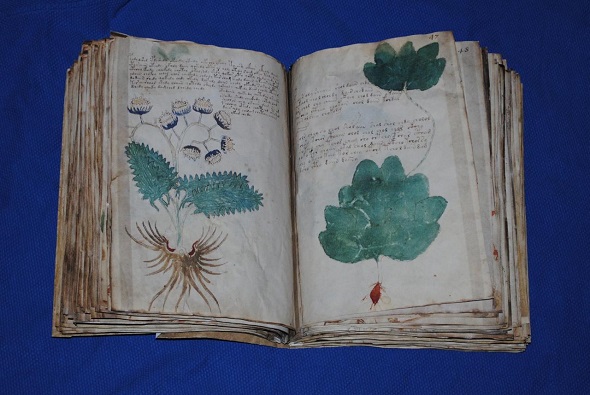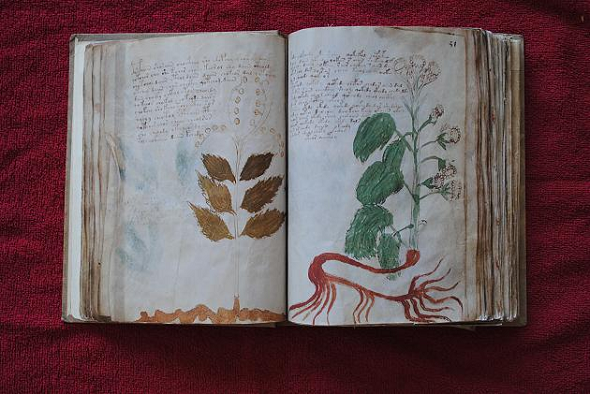A recently published paper introducing an alleged solution of the Voynich manuscript has received many critical comments. The negative feedback has caused the university the paper author works for to retract a press release .
On Thursday morning I received an email from the German news magazine Der Spiegel. A journalist working for this publication wanted to ask me a few questions about a recently published alleged solution of the Voynich manuscript. To my regret, I didn’t read his mail until early Thursday afternoon, so my reply came too late. As the deadline for the next Der Spiegel issue was approaching, the journalist interviewed somebody else.
Meanwhile, the new issue of Der Spiegel has been published, but I can’t find an article about the Voynich manuscript in it. Perhaps, the editors had doubts whether this new Voynich solution claim was worth reporting about. If this was the case, they were probably right.
Another solution claim
The new alleged Voynich solution Der Spiegel asked me about was published by British Romance languages expert Gerard Cheshire from the University of Bristol in the scientific magazine Romance Studies. Many readers, including Norbert Biermann, Ralf Bülow, Claus Diem, Elonka Dunin, Karsten Hansky, Tobias Schrödel, Arnim von Schwedler, Wolfgang Wilhelm, Cliff, and Eberhard have made me aware of this work and the intensive press coverage.
Alleged Voynich manuscript solutions are far from unusual. At least 60 of them have been published over the last 100 years. I am not aware of a list containing all alleged Voynich solutions and I don’t think anybody will ever be interested in compiling one.
So far, none of the many solutions has been accepted by the Voynich community. The problem is that if one assumes a complicated encryption method (e.g., a MASC with homophones, polyphones, nulls, and abbreviations) and/or an exotic plaintext language (e.g., a lost Armenian dialect from the middle ages), it is always possible to “decrypt” text passages from the Voynich manuscript into something that sounds more or less meaningful. Two years ago, I suggested a method that can be used by Voynich solvers to test there solutions, but so far nobody dared to take this test.
This said, it comes as no surprise that Gerard Cheshire’s announcement that he has solved the Voynich manuscript did not necessarily set the Voynich world on fire. Nevertheless, it has led to many discussions – for instance on the Voynich maniscript mailing list (hosted by Richard SantaColoma).
It is at least note-worthy that Cheshire’s paper, unlike most other works of this kind, was published in a scientific magazine with peer-review. The bad news is that it was not a magazine typically read and reviewed by Voynich manuscript specialists – like Cryptologia. Perhaps, Cheshire preferred to hand in his work to a less renowned magazine because he expected the chances of being accepted to be higher.
Before publication, Cheshire had sent draft versions of his work to several Voynich manuscript experts (including me) in order to get feedback. I have to admit that I didn’t give any feedback because there are simply too many Voynich solutions and other works I am asked to comment on.
Experts publish critical comments
As mentioned, there are usually two levels of complexity that lie between the Voynich manusript text and the proposed plaintext: the (complicated and non-deterministic?) encryption method and the (exotic and not exactly defined?) language used. In this case, the encryption method appears to be trivial or non-existing, which means that the language is the critical point.
Cheshire claims that the Voynich manuscript is a kind of therapeutic reference book written by nuns for Maria of Castile, queen of Aragon, in a lost language known as proto-Romance. To my regret, my knowledge of proto-Romance isn’t the best. In general, I am an encryption expert, not a linguist. So, it is hard for me to judge the validity of Cheshire’s solution myself. Instead, I have to rely on the opinions of language experts.

Source: Schmeh
So far, most comments of language experts about Cheshire’s paper have been very negative. For instance, linguist Koen Gheuens has published a devastating critique of Cheshire’s work on his blog. Among other things, he writes: “The paper claimed that the language in the VM was proto-Italic. As a linguist, I know that such a thing is impossible – it is the equivalent of saying that Triceratops are still alive in some remote part of the world. […] The proto-Italic language was spoken before the Homeric poems were written, just to provide a comparison. By that time, it had already evolved to Old Latin, which is attested mostly in inscriptions. The earliest known author in any Romance language was Livius Andronicus , who lived in the 3rd century BCE, over half a millennium later than the extinction of the proto-Italic language. It is absolutely impossible for any large text in proto-Italic to have survived, even in transmission. Proto-Italic changed into languages like Latin. It would not have been understood anymore by the time we get the first Latin authors, and certainly not 2 millennia later, when the Voynich was written.”
Koen even accuses Cheshire of dubious practices. He writes: “Additionally, his PhD is in a completely unrelated field, but his manner of communication strongly implied that it was in linguistics. […] A peculiar episode took place on Nick Pelling’s site, where in the comments only one person, one Rick Sheeger, defended Cheshire’s ‘work’. Sheeger was soon discovered to be a pseudonym employed by Cheshire himself.”
Here and here are other critical statements about Cheshire’s paper.
On May 15th, the University of Bristol published a press release about Cheshire’s alleged success. A day later, they retracted it and replaced it with a comment that ends with the following statement: “Following media coverage, concerns have been raised about the validity of this research from academics in the fields of linguistics and medieval studies. We take such concerns very seriously and have therefore removed the story regarding this research from our website to seek further validation and allow further discussions both internally and with the journal concerned.”
Follow @KlausSchmeh
Further reading:
Linkedin: https://www.linkedin.com/groups/13501820
Facebook: https://www.facebook.com/groups/763282653806483/



Kommentare (18)